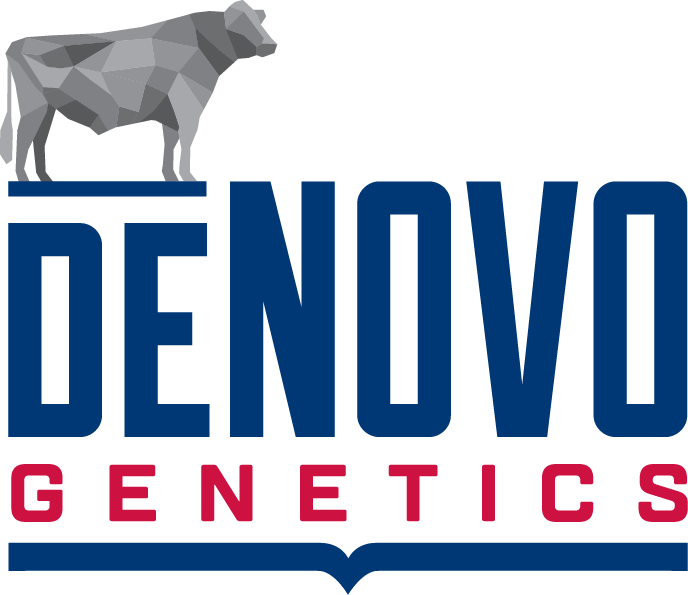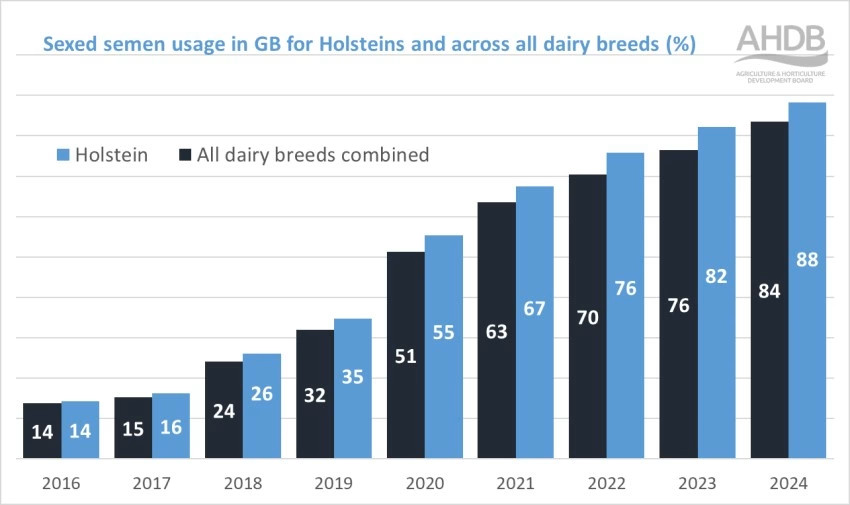ABS’s full ownership of De Novo Genetics boosts dairy innovation and profitability. How will this strategic move impact your dairy operations?
Summary:
ABS Global has taken a significant step forward by attaining full ownership of De Novo Genetics LLC, marking a monumental milestone in its quest for genetic excellence. This strategic investment not only underlines ABS’s commitment to advancing genetic progress but also ensures full control over its dairy genetics engine, promising faster innovation and enhanced product quality. Jeff Low, ABS COO, emphasized, “This investment enables us to deliver on our commitment to excellence, allowing us to innovate faster, improve quality, and respond effectively to the needs of our customers.” Established as a joint venture with De-Su Holsteins in 2016, De Novo has introduced over 800 bulls into the market, with the highest quality genetics still in the pipeline. As ABS incorporates these genetics into its strategic framework, dairy farmers can expect an influx of superior traits, improved profitability, and access to cutting-edge technologies like CRISPR, ensuring a wider choice of customized product solutions. Operational adjustments include relocating most ABS embryo donors to ABS facilities for better quality standards while continuing to collaborate with third-party facilities like De-Su Holsteins.
Key Takeaways:
- Enhanced Innovation: Full ownership allows ABS to accelerate product development and innovation, meeting customer demands more efficiently.
- Stronger Control: ABS gains complete control over De Novo Genetics, ensuring alignment with its long-term strategic goals.
- Ongoing Partnership: Despite full ownership, ABS will continue collaborations with entities like De-Su Holsteins to advance genetic progress.
- Increased Genetic Development: Most embryo donors will be housed at ABS facilities, streamlining the genetic enhancement process.
- Commitment to Quality: ABS’s investment underscores its dedication to delivering superior genetics and maintaining industry leadership.

ABS Global’s recent purchase of full ownership of De Novo Genetics LLC demonstrates its steadfast commitment to genetic development. Technological developments customized to market demands are also on the way. “This investment enables us to deliver on our commitment to excellence, allowing us to innovate faster, improve quality, and respond effectively to the needs of our customers,” said Jim Low, ABS’s chief operating officer.
ABS Global Reinforces Industry Leadership with Strategic Full Ownership of De Novo Genetics
ABS Global Inc. (ABS) has long been a leader in bovine genetics and is dedicated to promoting dairy and beef genetics worldwide. ABS has maintained its position as a key industry leader by relentlessly pursuing genetic quality and innovation.
In 2016, ABS took a significant step in its genetic development objective by forming De Novo Genetics LLC with De-Su Holsteins, a highly regarded dairy farm company in New Albin, Iowa. This cooperative venture has played a crucial role in establishing a solid foundation for dairy genetics and improving the genetic options accessible to dairy producers, contributing significantly to ABS’s growth.
Since its inception, De Novo Genetics has made significant strides in developing an impressive roster of over 800 dairy bulls. These bulls have successfully entered the market via ABS or are awaiting their debut. Among these outstanding sires, ENTITY and VENTURE stand out as daughter-proven sires. At the same time, BENEFIT and LEEDS are the promising young bulls in their inventory. These initiatives have bolstered ABS’s status as a top source of high-quality dairy genetics and demonstrated the success and impact of De Novo Genetics.
The Strategic Importance of ABS’s Full Ownership of De Novo Genetics
ABS’s complete ownership of De Novo Genetics is a strategic move that aligns with its long-term product strategy and unwavering commitment to genetic development. This decision allows ABS to have direct control over a crucial component of its genetic engine, ensuring alignment and eliminating competing agendas.
ABS’s full control over De Novo Genetics brings several benefits. It accelerates decision-making, leading to faster innovation and adoption of new technology. This control also allows ABS to seamlessly integrate De Novo’s high-quality genetics into its product line, creating a more unified and rapid development environment.
Furthermore, the strategic decision allows ABS to maintain and improve the quality of its genetic supplies. ABS has complete control of De Novo, allowing it to manage all aspects of product development, from early research to final market release. This monitoring guarantees that the company’s high standards are maintained and that genetic advancements are accomplished without compromise.
The advantages of this transaction extend to ABS’s clients, who will benefit from faster genetic developments and a wider choice of customized product solutions. By maximizing De Novo’s genetic potential, ABS is poised to provide farmers with bulls with more excellent performance, improved health features, and increased profitability. This is an exciting time for our clients, as they can look forward to a future of enhanced genetic solutions that meet their specific needs.
Finally, ABS’s complete ownership of De Novo aligns with its strategic aims of leading the industry in genetic excellence and innovation. It strengthens the company’s position as a leader in dairy genetics, ensuring further success and revolutionary improvements for its worldwide client base.
Appreciating Partnerships and Embracing Future Innovations: ABS’s Strategic Takeover of De Novo Genetics
“We would like to thank Darin and the entire Meyer family for their great partnership and strong support over these years, and we wish them continued success as we work together,” says Katie Olson, ABS Senior Director, Global Bovine Product Development.
“We are excited to take full control of De Novo, a critical component of our long-term product strategy,” says Jim Low, CEO of ABS. “This investment helps us to deliver on our promise to excellence by helping us to develop quicker, increase quality, and more effectively meet our customers’ demands. Our team is actively working on additional features and upgrades to differentiate De Novo in the market.”
ABS’s Vision for the Future: Pushing the Boundaries of Bovine GeneticsABS intends to use cutting-edge technologies to push the frontiers of what is possible in bovine genetics. ABS intends to speed the creation of high-performance genetic characteristics by investing in breakthrough genomic techniques such as CRISPR and next-generation sequencing technology. This accelerates the invention cycle and improves the accuracy and quality of existing genetic products. Consider the possibilities: faster-growing, healthier, and more productive herds suited to the specific demands of dairy producers.
Furthermore, ABS plans to use advanced data analytics and machine learning algorithms to improve its genetic selection process. These technologies will allow farmers to make more exact forecasts about genetic potential, ensuring they maximize their investment. Understanding patterns and trends in genetic data allows ABS to give practical solutions tailored to particular farm needs.
One promising area of growth is the advancement of embryo transfer procedures. ABS intends to improve In Vitro Fertilization (IVF) and Embryo Transfer (ET) techniques, boosting efficiency and success rates. This will increase the number of high-quality calves born yearly, accelerating genetic progress in dairy herds.
These technical breakthroughs allow ABS to respond more quickly to market needs, ensuring their products stay at the forefront of genetic progress. This means higher yields, improved milk quality, and more profitability for dairy producers. The future of dairy production is bright, with ABS and De Novo leading the way in genetic innovation.
Revolutionizing Operations: Strategic Relocation and Enhanced Collaboration
Following the purchase, we anticipate many substantial operational adjustments consistent with ABS’s strategic aims. One of the most significant improvements will be relocating most ABS embryo donors to ABS facilities, resulting in tighter control and better quality standards. Furthermore, third-party facilities such as De-Su Holsteins will continue to play an essential role in creating a collaborative environment for genetic progress.
On the ground, this implies that thousands of ET (Embryo Transfer) and IVF (In Vitro Fertilization) calves will continue to be born every year across a growing coalition of cooperator recipient herds. This network of herds is critical because it provides the infrastructure required to expand genetic breakthroughs and fulfill the expectations of dairy producers worldwide.
These operational changes reflect ABS’s larger vision for the future, in which genetic development is not just a goal but a must. ABS intends to expedite genetic advancements by combining and streamlining its facilities and collaborations, resulting in practical advantages for dairy farmers.
The Bottom Line
ABS’s purchase of De Novo Genetics is more than a business move; it demonstrates the company’s dedication to pushing the frontiers of dairy genetics. This transfer gives ABS complete control over De Novo’s operations, resulting in speedier innovation and quality improvements. With complete ownership, ABS is better positioned to address customer demands and increase dairy profitability via superior genetic innovations.
Consider this: if ABS adds De Novo’s high-quality genetics to its inventory, what does this imply for the future of your herd? The sector is about to undergo a massive upheaval, and those that remain ahead of the curve will surely gain. Remain connected and educated, and, most importantly, be ready to use these innovations to improve your dairy farming operations.
Learn more:
- Mid-Year 2024 Global Dairy Business Review: Key Developments from January to June
- STUD WARS: Which AI Company Holds the Power in the Dairy Cattle Genetics Universe
- Australian Dairy Industry Worries Over Fonterra’s Local Business Sale: Market Consolidation Concerns Emerge
 Join the Revolution!
Join the Revolution!
Bullvine Daily is your essential e-zine for staying ahead in the dairy industry. With over 30,000 subscribers, we bring you the week’s top news, helping you manage tasks efficiently. Stay informed about milk production, tech adoption, and more, so you can concentrate on your dairy operations.







 Join the Revolution!
Join the Revolution!





